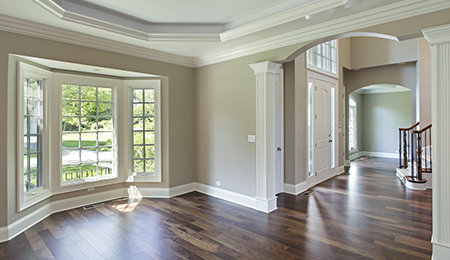These changes to the mortgage stress test may affect your buying power.
What is a mortgage stress test? It’s a worst-case scenario projection meant to protect the consumer. Since 2017, insured mortgages have been subject to stress tests.
In Canada, a house, condo, and two-unit duplex can all be bought for as little as 5% down, and a three- or four-unit building can be purchased with as little as 10% down. That’s what we call an insured mortgage since it has a high loan-to-value ratio. We also have conventional mortgages, which allow people to buy with 20% down or more.
When you’re applying for a mortgage, there are two rates involved with the application: 1) the contract rate, which is currently hovering around 2%, and 2) the qualification rate, which is a much higher rate. A stress test sees if you can pay the higher qualification rate on your mortgage if you encounter financial difficulties, the market turns, or the interest rate goes up. Here’s an example to better help you understand:
Suppose you want to buy a property for $400,000, and you have $100,000 available as a down payment. That means you would need a $300,000 mortgage. In reality, at around a 2% interest rate, that mortgage would cost you as a buyer $1,270 per month. However, that same mortgage is $1,788 per month at the qualification rate—a whopping 40% more! That means for you to be able to buy a property that costs $1,270 a month, you need to prove to the bank that you can afford $1,788.
“The point of changing these stress tests is to cool down rising home prices.”
So what changes are coming to the stress test? Up until June 1, 2021, the qualifying rate for a stress test was 4.79%. On June 1, the qualifying rate increased to 5.25%. That may seem like an insignificant bump, but let me use another example to demonstrate how important that increase is:
Let’s assume you’re a buyer with a household income of $100,000, and you have an available down payment of $100,000. At the old qualifying rate of 4.79%, you’d roughly be able to afford a $470,000 home. At the new qualifying rate, you’d only be able to afford a $445,000 purchase. That means you’d need to bring $25,000 more on June 1 than you would have on May 31.
On the buying side, the implications of these changes are self-explanatory: The purchasing power of buyers has been reduced by 5%. For sellers, know that as buyers’ purchasing power is reduced, so too is the size of the pool of buyers who can afford your home. When fewer buyers can afford your home, demand for it goes down, which means that prices will follow suit. That is ultimately the point of changing these stress tests, to cool down rising home prices.
If you have any questions about stress tests or purchasing a home in today’s market, don’t hesitate to reach out to me. I’d love to be a real estate resource for you.







